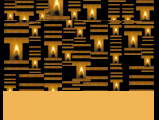Chamber Concert by
Colleen Lee & Friends
Sunday (18 October 2020 - 16:00)
BEETHOVEN Sonata in F major, Op.24 “Spring”
BEETHOVEN Piano Trio in D major, Op.70 No.1 “Ghost”
SCHUBERT Piano Quintet in A major, D.667 “Trout”
This year marks the 250th anniversary of Ludwig van Beethoven’s birth, with his beloved music celebrated in The Joy of Music Festival. Opening this chamber concert is the popular Violin Sonata in F major (Op.24). This was one of two violin sonatas (the other is Op.23) composed in 1801 and dedicated to the Viennese banker Moritz von Fries, who would later receive the dedication of Beethoven’s mighty Seventh Symphony. The nickname of the “Spring Sonata” did not come from Beethoven but from a publisher who for commercial reasons decided that the music sounded fresh and rejuvenating like the season itself. The obvious comparison is with his Pastoral Symphony, which shares the same key and harmonious spirit.
The first movement is highly lyrical as the violin sings its amiable first theme. The second theme is more energetic, backed by robust repeated piano chords. The slow movement’s melody is hauntingly beautiful, accompanied by the piano’s Alberti bass, a device synonymous with Classical era sensibilities. The skipping Scherzo (where the violin playfully echoes the piano) and its accompanying Trio section is surprising brief, lasting just one short minute before ushering in the Rondo finale. Here, the opening movement’s congeniality is relived, with any hint of stress and tension dismissed with each welcome return of its sunny main theme.
Beethoven’s Op.70 pair of piano trios was dedicated to one Countess Anna Maria von Erdödy, a Hungarian-born patron whose Viennese residence he had regularly stayed in 1808. She and other patrons had bestowed the composer an annual stipend for life, ensuring his livelihood in Vienna thus discouraging him from leaving for greener pastures elsewhere. This was a gesture of gratitude despite a quarrel on domestic issues which had strained their relationship. This was further resolved in 1815 when he dedicated, again, to her his Op.102 pair of cello sonatas.
The first trio in D major has the interesting nickname “Ghost”, but that again was not of Beethoven’s own device. This refers to the eerie and spectral quality of its slow central movement. Cast in D minor, its terse melodic line, abrupt dynamic shifts, stark chords, hushed sotto voce strings and rumbling piano tremolos make it a study of desolation and melancholy. This, in turn, was derived from sketches he had made for the witches scene from Macbeth, an opera project which never came to fruition.
Contrast this highly tense atmosphere with the first movement’s ebullience, where all three instruments launch the opening theme’s descending scales in perfect unison. This is contrasted with a more lyrical second subject which dominates much of the exposition. The development section pits both themes in a pitched battle before later engaging in some skillful counterpoint. The finale, marked Presto, also displays a carefree disregard to earlier trials and tribulations, closing the work in a sparkling and spirited high, clearly one without ghouls or spooks.
Imagine a group of music-loving friends coming together one evening over food and drinks to enjoy a spot of communal music making, and one gets the idea of hausmusik. Austrian composer Franz Schubert, better known in his lifetime as a master of Lieder, instrumental and chamber works, reveled in such domestic occasions when his music was sung and played. We now refer to these affectionately as Schubertiades, and the work which inevitably crops up is his “Trout Quintet”.
Unusually scored for piano, violin, viola, cello and double bass (as opposed to piano and string quartet), Schubert’s piano quintet in A major was composed in 1819 but not published until after his death. It was written for one Sylvester Paumgartner, a mining administrator and amateur cellist whose home in Styria was visited by Schubert on several occasions.
Also unusual are its five movements, which alternate between fast and slow. These include an opening movement in sonata form, a slow movement, a brief scherzo and a rondo finale. The fourth movement is a wonderful set of variations on the lied Die Forelle (The Trout), a favourite song of Paumgartner’s, hence the work’s nickname. The song itself is cheerful despite its cautionary message, which alludes to ladies ensnared by men's guile, like the eponymous trout outwitted in murky waters by an angler.
The congenial piano part is not particularly demanding, well suited for skilled amateur keyboardists, but it gets trickier in the running passages of the fourth movement. For concert pianists, this is the closest Schubert got to writing a piano concerto. The low strings, namely cello and double bass, provide the dynamic range and a degree of warmth which seals the collegiality experienced by the five performers and their audience.
Programme notes by Chang Tou Liang



